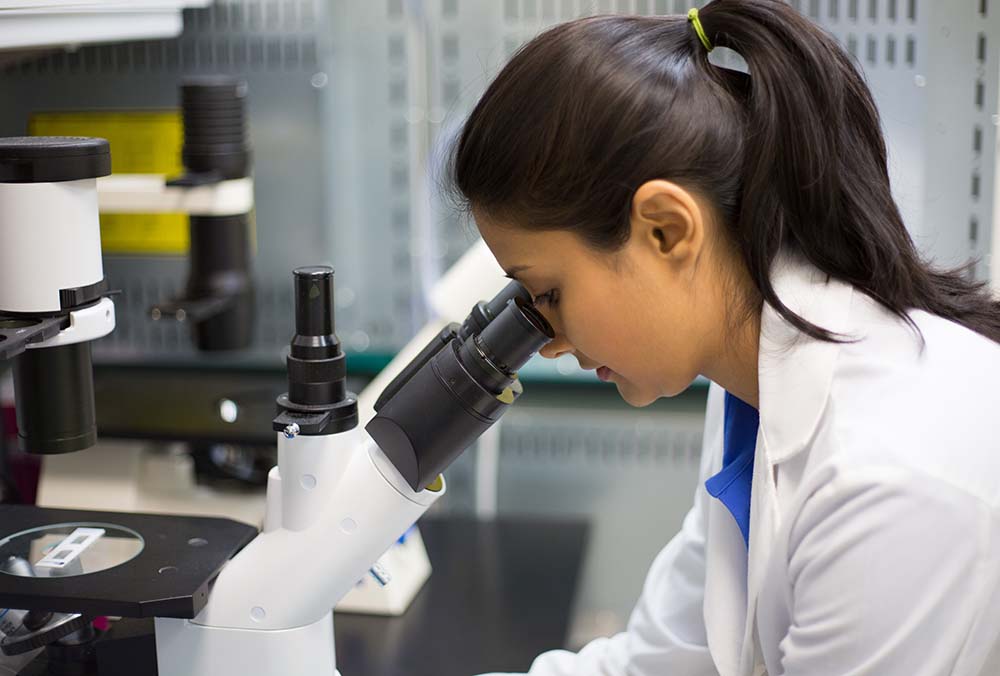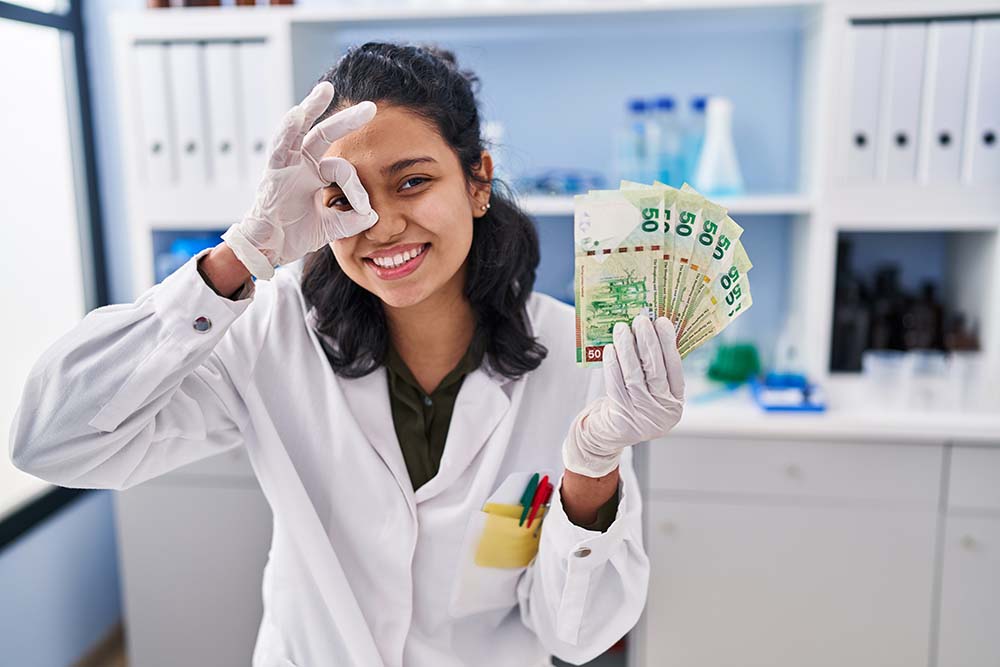When organic chemist Darshan Ranganathan received an 1851 Research Fellowship to conduct post-doctoral research at The Imperial College London in the 1960s, it enabled her pathbreaking work and discoveries in protein folding. Similarly, anthropologist Irawati Karve’s pioneering research stint in Germany around 1928 was financed by Jivraj Mehta, a member of the Indian National Congress at the time. Without the right funding opportunities for these women of science, several early STEM breakthroughs would have simply fallen by the wayside. Every brilliant scientific discovery or invention has taken time, dedication, effort, commitment, determination – and money!
According to the All-India Survey on Higher Education (AISHE), the number of women science researchers doubled from 30,000 in 2014 to over 60,000 in 2022. Of these, the highest participation was in biotechnology, where women are 40 per cent of the researchers. The upward trend is good news, but we’ve still got a long way to go, and part of the problem is funding – women researchers get far lesser than their male counterparts.
But why do we specifically want women researchers to be funded? Scientific breakthroughs impact all genders equally. Therefore, it is only ethically right that women get equal representation during research. In 2010, US Senator Barbara Mikulski said, "Remember the famous study, take an aspirin a day to keep the heart attack away? That study was done on 10,000 men. Not one woman was included. In a study of the aging process, they told me women weren’t included because there wasn’t a ladies’ room available for study participants. Yet the results of these studies were being applied to men and women. I vowed to fix that."

As a female researcher, there are various ways to get funded in India, both by the Government and privately. Says Uttara Madhavan, a former Professor of Botany, “The Department of Science and Technology has some great Fellowships for Indian women in science to receive funding. For those pursuing research in Basic or Applied Science, there is the Women Scientist Scheme – A (WOS-A) which can give you up to ₹30 lacs (excluding HRA and overheads). The Women Scientist Scheme – B (WOS-B) is for interventions for societal benefit, and you can receive up to ₹25 lacs (excluding HRA and overheads). For these two schemes, you need to be at least 27 years old to apply, but not older than 57. There are some minor age relaxations for those belonging to the Scheduled Castes, Scheduled Tribes, and Other Backward Castes, as well as the physically challenged. If you serve up a proposal that is compelling, you could be selected for these two grants that are valid for a period of three years.”
“There is also a Women Scientist Scheme – C (WOS-C) that is quite unique. If you have a qualification in STEM fields, it offers you one-year training in the field of Intellectual Property Rights (IPRs) so that you can protect your unique research findings, filing, trademarks, copyright, and so on. This is for women researchers aged between 25 and 47 who could receive up to ₹35,000 every month, ” adds Madhavan
There are also unique opportunities that the Department offers for meritorious women who want to do collaborative research with premiere science institutions for 3 – 6 months in the USA by way of the Indo-US Fellowship for Women in STEMM (the extra M stands for Medicine!). Also, under the ‘Consolidation of University Research through Innovation and Excellence in Women Universities (CURIE – how apt!)’ Programme, certain women’s universities are being given grants to develop their research infrastructure to motivate more women to engage with state-of-the-art laboratories. As Andrea Hinwood, Chief Scientist at the UNEP said, “As academics, we need to ensure that we have women – whatever their roles are – so that we can engage. It will improve our outcomes… One of the things we can do is have women participate in research – we might improve the science.”
Believe it or not, there are several organisations that offer women in STEM research courses with funding opportunities. Says Nathaniel Anbu, a career strategist, “As part of the L’Oreal UNESCO partnership, for the last two decades, L’Oreal India For Young Women In Science (FYWIS) has given over 385 women funding to pursue their scientific dreams, with a scholarship of ₹2,50,000 to each of them. Tech giant IBM also has several schemes and grants for women who want to pursue careers in Technology. There are also several global scholarships and grants that are open to Indian women. The Amelia Earhart Fellowship is given to women pursuing research in aerospace engineering, open to any nationality. Then the Graduate Women In Science (GWIS) National Fellowships Program enables funding for women in the natural sciences.”

While you may have great ideas and scientific brilliance, finally it is your proposal that sets you on the path to being financed. A few things need to come through clearly – why your project is important, the problems it solves, the impact it has on the community around you, what you want to achieve through the research, a justified deadline and budget, how you propose to go about the process, your own reputation and skill sets, and how sustainable your research is in the long-term. You’ll also have to make sure you’re a right fit for the organisation or the Grant/Fellowship in question, and this needs to come through in your proposal. Lastly, your story and journey as a scientist are unique. Make your proposal compelling so that it brings your goals and dreams for a scientific future to life in both tangible and abstract ways.